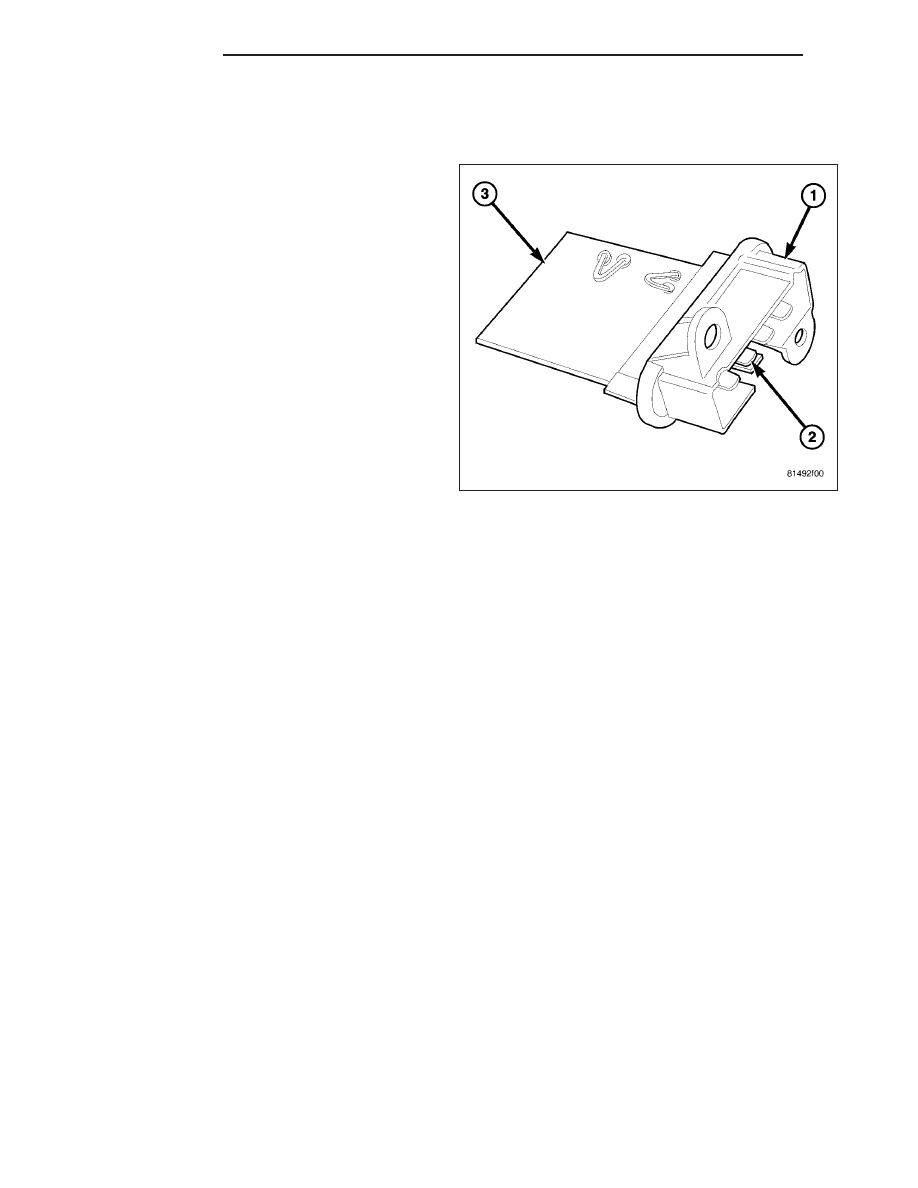Content .. 1407 1408 1409 1410 ..
Jeep Liberty KJ. Manual - part 1409

RESISTOR-BLOWER MOTOR
DESCRIPTION
The blower motor resistor is mounted to the rear of
the HVAC housing, directly behind the glove box. The
blower motor resistor consists of a molded plastic
mounting plate (1) with an integral wire connector
receptacle (2). Concealed behind the mounting plate
is the resistor circuit board (3).
The blower motor resistor is accessed for service by
opening the glove box.
OPERATION
The blower motor resistor is connected to the vehicle electrical system through a dedicated wire lead and connector
of the HVAC wire harness. The blower motor resistor has multiple resistor circuits, each of which will reduce the
current flow through the blower motor to change the blower motor speed.
The blower motor control in the MTC heating-A/C system directs the ground path for the blower motor through the
correct resistor circuit to obtain the selected speed. With the blower motor control in the lowest speed position, the
ground path for the blower motor is applied through all of the resistor circuits. Each higher speed selected with the
blower motor control applies the blower motor ground path through fewer of the resistor circuits, increasing the
blower motor speed. When the blower motor control is in the highest speed position, the blower motor resistor is
bypassed and the blower motor receives a direct path to ground.
The blower motor resistor cannot be adjusted or repaired and, if faulty or damaged, it must be replaced.
DIAGNOSIS AND TESTING
BLOWER MOTOR RESISTOR
WARNING: On vehicles equipped with airbags, disable the airbag system before attempting any steering
wheel, steering column, or instrument panel component diagnosis or service. Disconnect and isolate the
negative battery (ground) cable, then wait two minutes for the airbag system capacitor to discharge before
performing further diagnosis or service. This is the only sure way to disable the airbag system. Failure to
take the proper precautions could result in accidental airbag deployment and possible personal injury or
death.
NOTE: For circuit descriptions and diagrams, refer to the appropriate wiring information. The wiring infor-
mation includes wiring diagrams, proper wire and connector repair procedures, further details on wire har-
ness routing and retention, as well as pin-out and location views for the various wire harness connectors,
splices and grounds.
1. Disconnect and isolate the negative battery cable.
2. Disconnect the wire harness connector from the blower motor resistor (Refer to 24 - HEATING & AIR CONDI-
TIONING/CONTROLS/RESISTOR-BLOWER MOTOR - REMOVAL).
24 - 38
CONTROLS
KJ